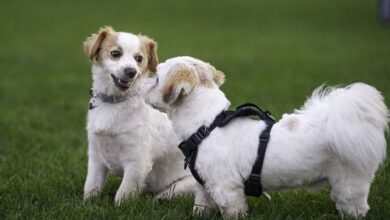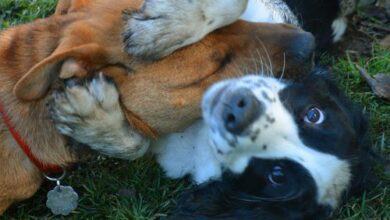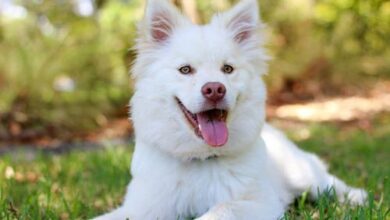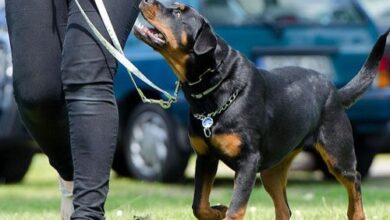A guide to Deconfinement for our Dogs
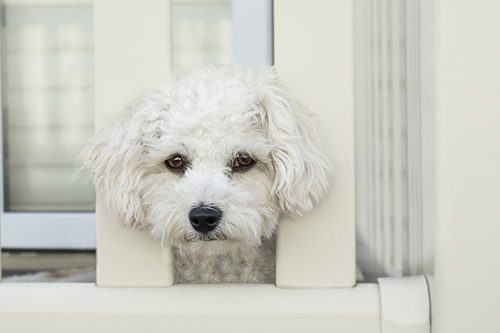

The title is a bit pompous, but it sums up the situation well. Indeed, containment to change a lot of things in our daily lives. So it’s not surprising that this also has an impact on our dogs. It is obvious that the return to normal will affect some dogs more than others. We will see three main issues arise:
- mismanagement of loneliness
- mismanagement of frustration
- poor socialization for puppies
Deconfinement for our dogs: the mismanagement of loneliness
A dog that mishandles loneliness, still called separation anxiety in a dog, is the equivalent of a panic attack in humans due to being left alone. The severity with which each dog manifests its emotion may be different for each dog.
But the physiological bases are the same. Fear and anxiety trigger hormonal and neurochemical processes that cannot be controlled by the dog (humans either). We cannot explain to our dogs that we will soon be back home. This makes it very difficult for the dog to relax, even if staying alone happens every day when you go to work.
Factors related to the mismanagement of loneliness


In the vast majority of cases of separation anxiety one or more main factors lead to this emotion in dogs:
- moving out
- a unique puppy in reach
- arrival of a new member in the family (animal or human)
- departure of a family member
- change of schedule
- back to work
- never being left alone and suddenly being left alone
- have a new puppy and leave it alone from the first night
- old age or other illness
These are the most common factors found in this case. During confinement, most dogs are with their master H24. This does not give him the opportunity to learn to love being alone. A dog that panics about being left alone will have different reactions.
How to deal with loneliness?
Here’s how you can help your dog manage his loneliness before coming back. You have to teach your dog every day to be alone and especially not all at once! Thus it will be prepared as best as possible before the resumption of daily life.
Having your own space: it’s one of the easiest things to set up. Your dog must be able to isolate itself in his basket or park, even when you are present. So you can condition it positively when you’re there! Take your favorite toy or treats and put them in your space. While your dog takes care of himself changing rooms for a few seconds before returning. When you come back, reward it again. Little by little you will be able to go to all the rooms of your house and stay longer.
Take advantage of small occasions: when you go out to smoke or pick up your mail, do so by leaving your dog in his space with something to look after.
Enrich his environment: it’s the best way he feels good and manages to take care of himself. Here is a generalizing picture of the enrichment of the dog’s environment.
Meeting these needs: Of course, you have to be able to meet your dog’s needs. It can therefore be given physical and mental activities in order to tire him out. Besides, we have free online training on this right here: Training10 activities to stimulate your dog.
Organize your days: Gradually, organize your days as if you were already in recovery. Dogs are very sensitive to the change of schedule, so don’t forget to get up as if you were going to work. Don’t forget to leave your dog alone. This means: don’t look at it all the time, don’t stimulate it too much or don’t caress it in your space).
No punishment: I remind you that punishing your dog for emotions he doesn’t control will make the situation worse. So even if your dog has done any damage, don’t punish him.
Once you have resumed your activities, it is possible to call on friends, family or professionals to take your dog out during the day.
Deconfinement for our dogs: mismanagement of frustration
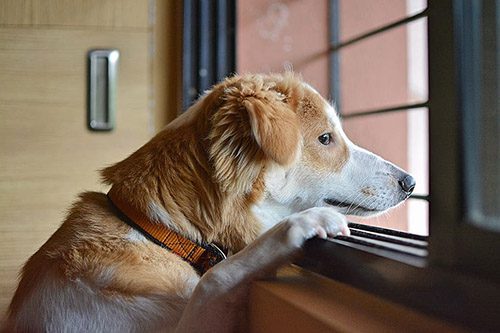

Poor management of frustration is a far from pleasant emotion for the dog.
Frustration will lead to behaviors such as:
- Destruction (for example, at the exits or the garbage can)
- The dog can start barking
- nervousness may cause him to pinch or bite the person or animal next to him or her
- It can make markings in so-called strategic places (such as on the wall of your bathroom when you are in the closed door, or even poop on the bed or sofa).
It must be understood that these are not revenge behaviors. The dog can’t conceptualize this idea. On the other hand, these are behaviors synonymous with bad being in dogs. The dog doesn’t get what he wants, so he’s infuriating somewhere. To help your dog, you will have to help him manage it.
The mismanagement of frustration is often due to:
- to the fact that we didn’t teach that to the dog
- that we always “give in” to what our dog wants
- these needs are not met or more met (exit, games, meetings, etc.)
It goes without saying that to deal with this frustration, the tips put above, can also be applied.
Deconfinement for our dogs: the bad socialization of the puppy
Containment will have had a real disadvantage on puppies. Indeed, when they need to discover the world most positively, you probably could not bring it into exploration. He may have heard less:
- noises (cars, bikes, scooters, etc.)
- (male, female, child, person in uniform, with helmets, crowd, etc.)
- other dogs (male, female, puppy of her age, other breed than hers or other color)
- city/country environment (your dog may move from one environment to another abruptly)
In short, the result is there, your dog may be afraid of all this, where to make him even more excited. If your dog is an adult, it can also upset him and make him reactive on a leash.
Don’t rush to show it all at once! On the contrary, take the time, as you had just had it. It is better to make few but positive discoveries, than too negative or worse that would make it sensitive to the environment.
In addition, you can also apply the tips put in the chapter on the mismanagement of loneliness.
Deconfinement: get your dog used to wearing a mask
Don’t forget to get your dog used to wearing a mask! Indeed, some dogs will be disturbed to see humans wearing masks. To get these steps done.


